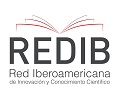Submissions
Submission Preparation Checklist
As part of the submission process, authors are required to check off their submission's compliance with all of the following items, and submissions may be returned to authors that do not adhere to these guidelines.- La petición no ha sido publicada previamente, ni se ha presentado a otra revista (o se ha proporcionado una explicación en Comentarios al editor).
- El archivo enviado está en formato OpenOffice, Microsoft Word, RTF, o WordPerfect.
- Se han añadido direcciones web para las referencias donde ha sido posible.
Copyright Notice
El contenido es licenciado bajo Licencia Creative Commons Atribución-NoComercial-CompartirIgual 4.0 Internacional.

Esta Licencia implica que es posible copiar, comunicar y distribuir públicamente su contenido luego de su edición (post print) siempre que se cite a los autores individuales y el nombre de esta publicación, así como la institución editorial. El contenido de esta revista no puede utilizarse con fines comerciales.
Los autores que publican en Documentos y Aportes conservan sus derechos de autoría y garantizan a la revista el derecho de ser la primera publicación del trabajo.
Los artículos que sean aceptados, deberán ser acompañados del documento Autorización de publicación que contiene la firma de los autores, en donde se acepta la originalidad del documento y autorizan a la Revista a la publicación del mismo.
Los autores son responsables por el contenido científico y los puntos de vista expresados, los cuales no necesariamente coinciden con los del equipo editorial.
Declaración de privacidad
Los nombres y direcciones de correo electrónicos proporcionados a Documentos y Aportes en Administración Pública y Gestión Estatal se utilizarán exclusivamente para los fines declarados y no estarán disponibles para ningún otro propósito u otra persona.






